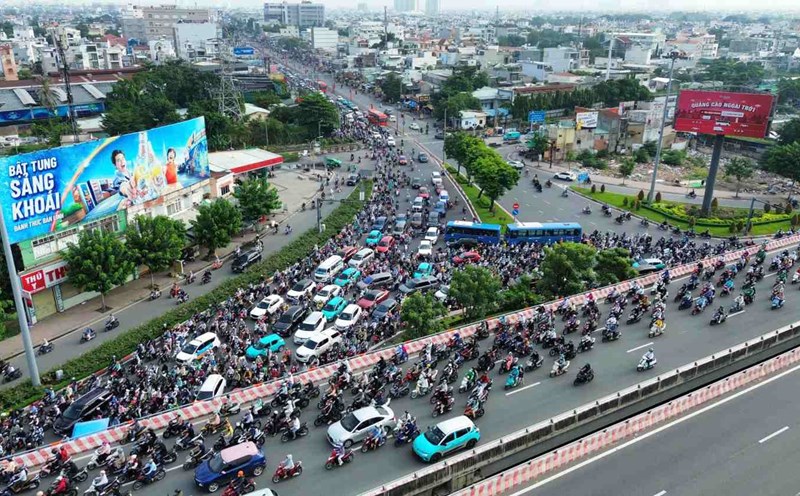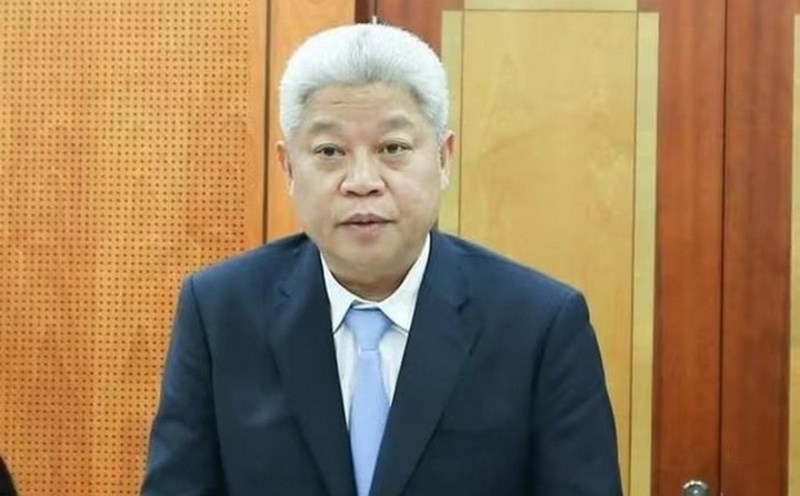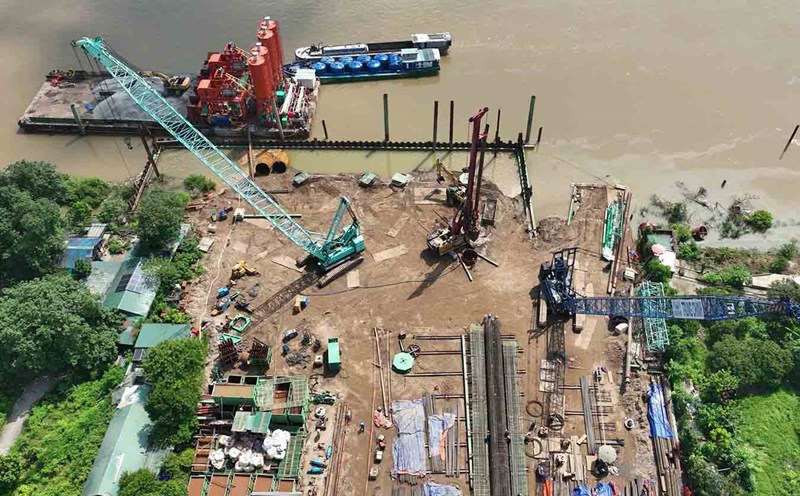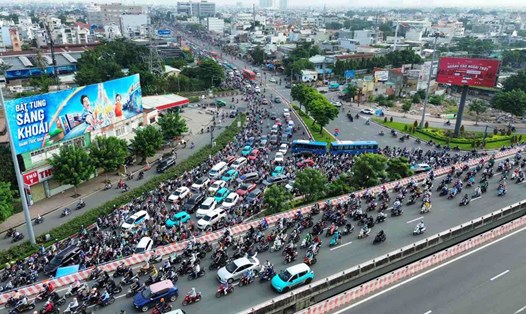According to the Ho Chi Minh City Department of Construction, in August 2025 alone, the city had 35,242 newly registered vehicles, including 7,468 cars and 27,774 motorbikes.
Up to now, after merging with Binh Duong and Ba Ria - Vung Tau, Ho Chi Minh City is managing more than 12.7 million vehicles, including more than 1.4 million cars and 11.3 million motorbikes.
The number of private vehicles continues to increase, creating great pressure on traffic infrastructure, especially at gateways to the center of Ho Chi Minh City.
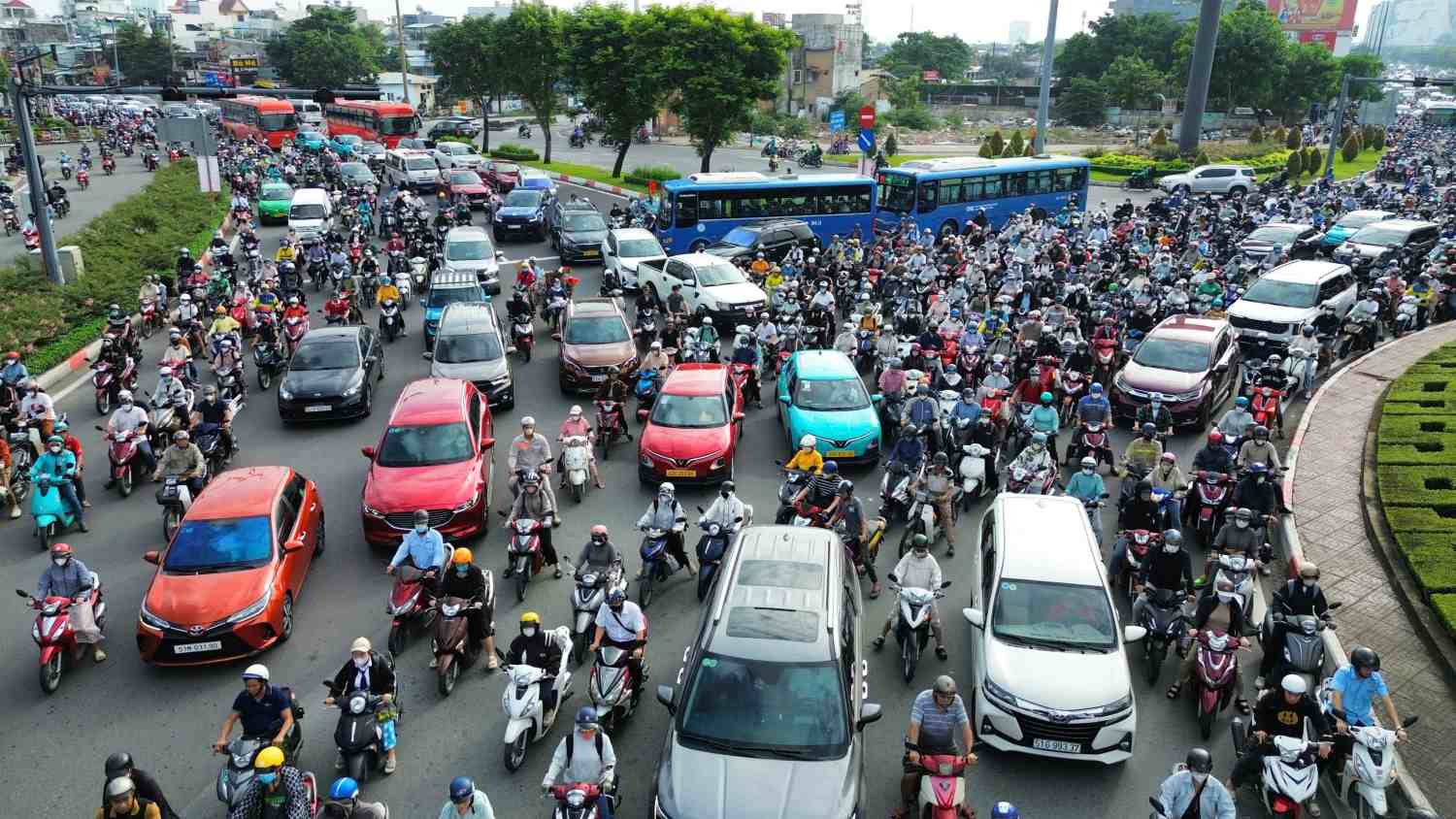
To reduce the burden, Ho Chi Minh City aims to strongly develop passenger and cargo transport by waterway. The city has identified 2 main waterway transport corridors including: North - Southeast and East - West, connecting key economic regions.
From there, 4 dynamic axes will be formed connecting the center in the following directions: Northwest (Saigon River - Thi Tinh River); Northeast (Dong Nai River - Saigon River - Rach Chiec); Southwest (Soai Rap River - Te Canal - Doi Canal); Southeast (Nha Be River - Long Tau - Dong Tranh - Thi Vai - Ganh Bai Bay).
These axes will connect the transportation of goods from industrial parks and agricultural products to ports, while also serving passenger and tourism transportation, thereby contributing to reducing road congestion.
In the central area, Ho Chi Minh City prioritizes investment in Nha Rong - Khanh Hoi international passenger port, passenger port at Bach Dang wharf; encourages the formation of public water wharves; at the same time, dredge and upgrade the Rach Chiec, Trau Trau, Ong Nhieu and many other river routes.
In the North, the city strives to complete at least one cargo port, one passenger port and one dry port; at the same time, encourage the development of passenger ports in the old Binh Duong area.
In the South, the city aims to complete Vung Tau international passenger port and some container terminals in the Can Gio - Cai Mep - Thi Vai area; in addition, dredging and upgrading the Rach Dia - Rach Loi, Rach Tom, Rach Doi - Song Kinh routes.

According to the planning orientation, the Ho Chi Minh City Department of Construction has proposed a list of key projects in the waterway sector, divided into 2 phases: 2026 - 2030 and after 2030.
The Ministry of Construction will preside over dredging and upgrading 3 shipping lanes with a total capital of about VND 7,000 billion, and at the same time renovate 4 national inland waterways with a budget of VND 7,101 billion.
20 local waterways will be upgraded with a total investment of about VND45439 billion from the budget.
Ho Chi Minh City plans to build 7 seaports (3 international passenger ports, 4 cargo ports) with a total capital of 436,615 billion VND from many socialized capital sources.
The city will develop 18 inland waterway ports (14 passenger ports, 4 cargo ports) with a total capital of VND 9,306 billion.
In addition, the city calls for investment in at least one dry port to serve an export warehouse in the old Binh Duong area.

